Mastering the Art of Plain French Toast

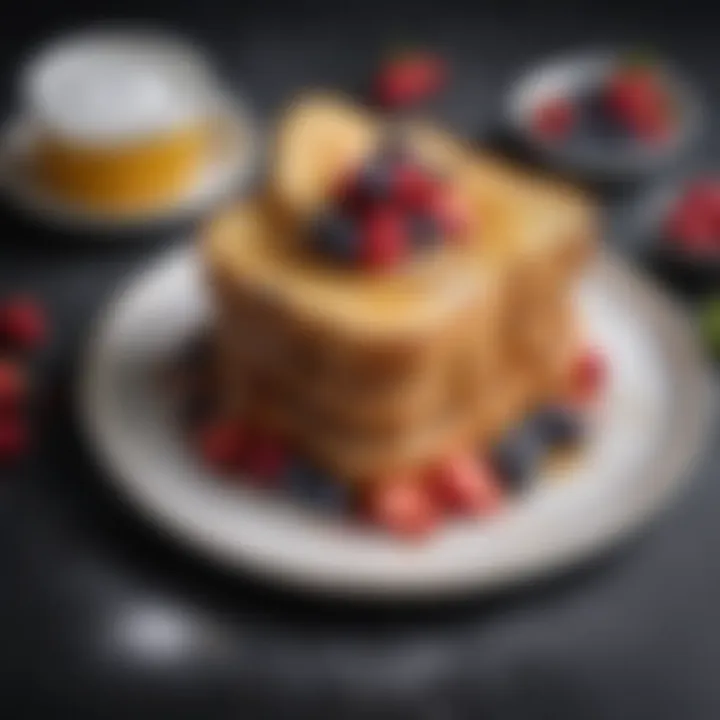
Intro
The humble slice of plain French toast serves as a canvas for culinary creativity, dating back centuries. Often overshadowed by more elaborate breakfast items, it stands out with its simplicity and versatility. With just a few essential ingredients, you can turn plain bread into something delightful, warm, and comforting. Mastering this dish is not just a matter of following a recipe; it involves understanding the nuances of each component you incorporate, as well as the broader historical context that shaped it over time.
What makes French toast so appealing is its all-in-one charm. It’s an excellent way to use up leftover bread, and you can easily customize it with toppings or flavors that suit your taste. Whether you’re preparing breakfast for a busy weekday morning or a leisurely weekend brunch, understanding the art of crafting the perfect French toast will elevate your cooking game.
Let's unpack the essential components that go into making classic French toast and explore the significance of ingredient choices, techniques, and a few unique variations that can make this dish truly unforgettable.
Understanding French Toast
Understanding French toast is not just about whipping up a quick breakfast. It's a dive into the intertwining threads of history, culture, and the artistry of cooking. This dish, simple in premise yet rich in nuance, serves as a canvas for flavor and creativity. Knowing the intricacies of French toast lays the groundwork for one's culinary journey, transforming it from a mere meal into a beloved tradition.
Historical Background
The origins of French toast can be traced back to ancient times. The Romans had a method of soaking bread in milk and egg, then frying it. This demonstrates that the concept of combining stale bread with eggs is not a newfangled idea. Fast forward to medieval Europe, where it became a way to use up surplus bread. Not only was it economical, but it also played a role in tackling food waste, a principle that resonates even today in sustainable cooking.
As the years rolled on, various cultures adapted this basic concept, leading to different recipes and styles. For instance, French toast, as we know it, has its roots in France; the French called it "pain perdu," which directly translates to "lost bread.” This phrase reflects the resourceful nature of utilizing ingredients that might otherwise go to waste. In the United States, it gained prominence in the early 19th century, becoming a breakfast staple enjoyed by many. Unraveling this historical context not only pays homage to the dish but also enriches our appreciation for it.
Culinary Significance
Why should one ponder the significance of French toast? For starters, this dish symbolizes comfort and nostalgia for many. The process of preparing it often sparks memories of family gatherings or lazy Sunday mornings. Beyond its sentimental value, French toast serves multiple culinary purposes.
- Versatility: It can be dressed up or down. Want a decadent breakfast? Load it with fruit, whipped cream, and syrup. Prefer simplicity? A light dusting of powdered sugar might suffice.
- Ingredient Experimentation: The base ingredients can differ greatly, inviting cooks to get creative. From brioche and challah to gluten-free bread, the choice of bread alone can tilt the flavor profile in delightful ways.
- Cultural Exchange: As it crosses geographic boundaries, various cultures contribute their unique spin—think of the cinnamon-infused versions from Spain or even savory take on French toast found in Asian cuisines.
The exploration of French toast's culinary importance extends beyond just taste; it encourages a sense of resourcefulness—a nod to sustainable cooking practices, teaching valuable lessons about maximizing resources. Understanding these various aspects, historical and culinary, elevates our relationship with this dish, transforming it from basic sustenance into something far richer and more meaningful.
Essential Ingredients
Crafting the perfect plain French toast revolves heavily around the selection of essential ingredients. These elements not only define the flavor profile but also greatly influence the texture and overall experience of this beloved dish. Understanding the role of each ingredient can transform a simple breakfast into a sublime one.
Selecting the Right Bread
Choosing the right bread can make or break your French toast. The type of bread you opt for dictates the texture and flavor, serving as the canvas upon which everything else is built.
Options: Brioche, Challah, or Sourdough
Brioche is often the go-to choice for French toast due to its rich, buttery flavor and soft, airy texture. When you dip brioche in the custard, it soaks up the mixture beautifully without falling apart, resulting in a tender interior after cooking. Challah, an egg-based bread, adds a sweetness that enhances the dish. Its braided form makes for lovely presentation, and it too holds custard well. Sourdough, with its tangy flavor and chewy texture, lends an interesting twist to the dish. While sourdough can be slightly denser, its crustiness provides a delightful contrast when cooked. Each of these breads comes with its own unique flair, making them popular choices among cooks who desire a memorable French toast experience.
Factors to Consider: Texture and Freshness
The texture and freshness of the bread should not be taken lightly. Day-old bread tends to work best because it’s drier and absorbs the custard more effectively, preventing sogginess. Fresh bread, although soft and appealing, can result in overly mushy French toast if soaked for too long. The texture of the bread also influences the final product since denser breads, like sourdough, may require more time to absorb the mixture fully. A balance between texture and freshness is crucial in achieving that perfect custardy interior while still maintaining some structure.
Eggs: The Core Component
Eggs are not merely an additional ingredient; they are fundamental to the custard mixture. Their role goes beyond providing protein; they lend the dish its rich and creamy texture.
Understanding Egg Types: Free-range vs. Conventional
When it comes to eggs, the type matters. Free-range eggs come from hens that have more space to roam and generally have a richer flavor. Many cooks find that free-range eggs give their French toast a more vibrant color and a deeper taste compared to conventional eggs. While conventional eggs might be more readily available, they often lack the same depth of flavor, which can slightly dull the overall dish. Each type of egg has its own merits, but for best results, aiming for high-quality, free-range eggs can elevate your French toast significantly.
Egg-to-Milk Ratio: A Delicate Balance
Getting the right egg-to-milk ratio is essential for crafting the perfect custard. A common ratio is one egg to about ½ cup of milk, though this can vary based on personal preference. Too many eggs, and the mixture may become overly rich and custardy; too few, and it could lack that necessary coherence. Finding that sweet spot allows for a custard that coats the bread without overwhelming it. This balance is a critical factor in achieving the desired flavor and texture in French toast.
Milk Variations
Milk is another key ingredient that can dramatically affect the final dish. It's advisable to choose wisely between varied options, as each has its own impact.
Whole Milk vs. Plant-based Alternatives
Whole milk is often favored for its creamy texture and richness, which enhances the custard’s overall flavor. However, those who are lactose intolerant or prefer plant-based diets have options like almond milk, oat milk, or soy milk. These alternatives can impart different nuances; for instance, oat milk brings a mild sweetness, while almond milk adds a hint of nuttiness. When using plant-based milk, it’s paramount to ensure that the flavor complements rather than overpowers the dish. Therefore, knowing which milk to use can be the difference between an ordinary plate of French toast and one that impresses.
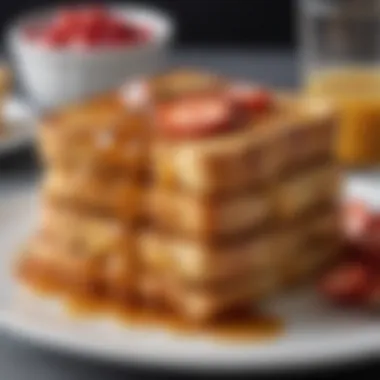
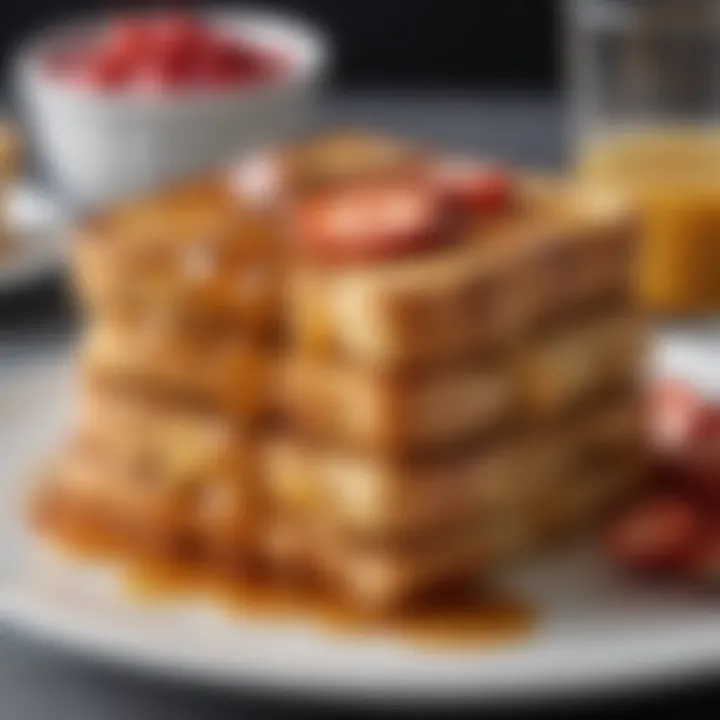
The Impact on Flavor and Texture
The choice of milk directly influences not just the flavor but also the mouthfeel of the French toast. Whole milk tends to yield a richer, creamier custard, leading to a more indulgent breakfast. On the flip side, light milk options may produce a lighter, less dense texture. This difference can affect how the bread absorbs the custard; richer milk varieties might lead to a luxurious soak. Recognizing this impact helps in tailoring the recipe to suit personal tastes, ensuring that every bite is both flavorful and satisfying.
Seasonings and Enhancements
Seasonings cannot be overlooked in the quest for an outstanding French toast. They’re the secret magic that can elevate a simple meal to heartwarming comfort food.
Vanilla Extract: An Essential Flavoring Agent
Vanilla extract is often viewed as a staple in the custard mixture. It adds a warm, inviting flavor that marries beautifully with the sweetness of the bread. The aroma it produces during cooking alone can be enough to turn heads. Natural vanilla extract tends to be preferred over synthetic varieties, as it provides a more complex flavor. A few drops are usually sufficient to make a big impact, demonstrating how a small amount of quality vanilla can significantly influence the final dish.
Cinnamon and Nutmeg: Classic Spices
Cinnamon and nutmeg are traditional spices that add warmth and depth to French toast. Cinnamon offers that comforting familiarity, while nutmeg gives a subtle and aromatic kick. These spices work together harmoniously, enhancing the sweetness of the dish while also promoting a sense of nostalgia. When sprinkled generously atop your French toast prior to the meal, they provide not just flavor but also visual appeal. However, it's important to find a balance; too much spice might overpower the dish, while just the right amount creates that perfect warm hug—something everyone looks for in comfort food.
Preparation Techniques
Mastering the preparation techniques in crafting plain French toast sets the stage for a delightful breakfast experience. This phase is crucial as it dictates not only the texture and flavor but also the overall aesthetic presentation. The nuances of mixing, soaking, and cooking determine whether the final dish will tantalize the taste buds or fall flat. Delving into these techniques equips even the budding chef with the confidence to produce an impressive dish that might rival the one served in high-end cafes.
Creating the Custard Mixture
Step-by-step Guide to Mixing
Creating the custard mixture forms the heart of French toast. This blend primarily consists of eggs and milk, and its significance cannot be overstated. To mix effectively, start by cracking fresh eggs, about two for each serving, into a bowl. Add milk—preferably a whole milk, for richness—and whisk them together until they harmoniously blend. An important note: the more vigorous the whisking, the airier your mixture will be. This leads to a fluffier toast when cooked, a texture that many admire.
One unique aspect of mixing is the potential variety. While the traditional ratio generally leans toward two eggs per cup of milk, exploring options like almond or oat milk introduces novel flavors that can appeal to diverse palates.
Tips for Achieving the Right Consistency
The right consistency in your custard mixture acts like the golden key to a splendid French toast outcome. The mixture should resemble a light cream, neither too thick nor too watery. One way to test this is to dip a piece of bread into the mixture. If it coats the bread without dripping excessively, you have hit the jackpot with your ratio! This balance is vital. Too thick, it might overwhelm the bread; too thin, and it won't adhere properly during cooking.
Soaking the Bread
Duration: Finding the Optimal Soaking Time
Soaking the bread is where the magic truly begins. Dipping the bread in the custard allows it to soak in all those wonderful flavors. However, there's a fine line: over-soaking can lead to a soggy mess. The optimal soaking time varies with the type of bread; for instance, brioche should sit just for about 20-30 seconds per side, while denser bread could use more time, perhaps up to a minute. This technique actually ensures that the mixture permeates the bread evenly, creating a lovely ooey gooey center when cooked.
Technique: Ensuring Even Absorption
Securing an even absorption is paramount to achieving that consistent flavor profile in each bite. One effective technique is to gently press the bread down into the custard, possibly flipping it with a spatula for an even coat. This technique is beneficial as it guarantees every slice gets just enough mixture absorption without becoming overly dense. By ensuring even distribution of the custard, you're setting yourself up for success in the frying phase.
Cooking Methods
Stovetop Techniques
When it comes to cooking methods, stovetop techniques shine brightly for French toast. It provides a degree of control that can help one achieve that perfectly golden-brown surface. Start by preheating a non-stick skillet, then add a pat of butter to enhance flavor. Cooking it on medium heat allows the toast to crisp nicely without scorching, a well-known issue for many wannabe cooks. Remember to flip each piece carefully after about three to four minutes. Why stovetop? It’s flexible and allows for immediate adjustments to temperature, a lifesaver when managing multiple pieces.
Alternative: Oven-Baking for Even Cooking
Oven-baking presents an alternative that many don’t consider, but could come in handy, especially when serving several guests. Baking French toast in the oven can ensure even cooking and browning across the entire batch. Preheat your oven to 375°F and place your soaked bread on a greased baking sheet. Baking for about 15-20 minutes achieves a lovely finish, particularly if you flip the slices halfway through. The advantage here is that it allows one to prepare other dishes simultaneously without standing by the stove, which certainly eases the chaos of breakfast prep.
Plating and Serving
When it comes to crafting the perfect French toast, plating and serving is just as important* as the cooking itself. It's the finishing touch that brings the dish to life and makes it a feast for the eyes. Good presentation can elevate a simple meal into something memorable* and can enhance the overall dining experience. With a little thoughtfulness, your French toast can go from homely to extraordinary with the right plating techniques and accompaniments.
Classic Presentation Techniques
Suggestions for Plating
Plating isn’t just about aesthetics; it also contributes to how the dish is perceived and enjoyed. A well-plated dish catches the eye, inviting the taster to indulge in the flavors. For French toast, one popular suggestion is to stack two or three slices neatly off-set, allowing for height and a delightful presentation. This arrangement showcases the texture of the toast and highlights any toppings that might adorn it.

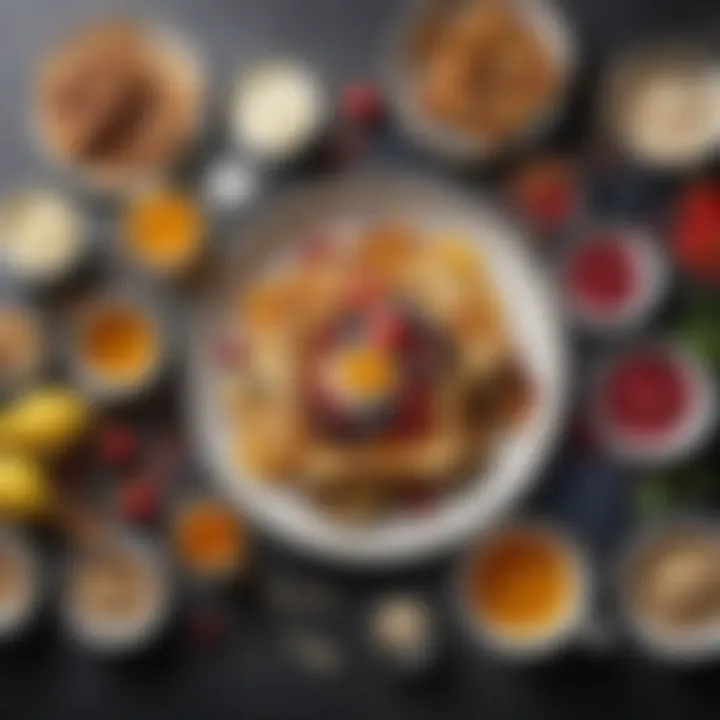
What’s great about this style is its simplicity. A sprinkling of powdered sugar or a drizzle of syrup can be added without making the plate look cluttered. The key here is that each element looks its best while complementing the classic toast. It’s also a beneficial choice for brunch gatherings where visual appeal matters; you want your guests to want to dive right in.
"Presentation can make or break the dining experience."
Pairing with Complementary Sauces and Toppings
Pairing sauces and toppings with your French toast enhances flavor, texture, and visual appeal. A classic choice is a warm maple syrup, which offers sweetness while complementing the buttery flavor of the toast. Additionally, fresh berries may add a pop of color and an acidic contrast to the richness of the dish. This kind of balance is a hallmark of excellent plating.
The uniqueness of pairing lies in the variety. Consider options like caramel sauce, which adds a rich, velvety texture, or a fruity compote for an elevated twist. These combinations not only enhance flavor but also allow for creativity in final presentation. However, it’s important not to overdo it; too many toppings can overwhelm and spoil the harmony you've worked to create.
Innovative Serving Ideas
French Toast as a Base for Savory Dishes
While many enjoy French toast sweetened with syrup, there’s a unique avenue to explore by serving it with savory toppings. French toast can be transformed into an ideal base for dishes like eggs Benedict or a poached egg topped with avocado and herbs. This trend acknowledges the versatility of the dish and speaks to a more contemporary approach to breakfast.
The key characteristic of using French toast in this way lies in the unexpected contrast between flavors—sweet and savory working in harmony. Choosing to serve it this way allows for an interesting dining experience that can cater to various palates and dietary preferences. This approach does carry the potential for folks to be confused by flavors they don’t associate with French toast, so be prepared for mixed reactions!
Creative Sweet Toppings to Elevate Flavor
Think beyond the standard syrup and butter here. Creative sweet toppings can really elevate your French toast game. Nut butter, for instance, adds a creamy richness, while fresh banana slices or seasonal fruits can provide natural sweetness. Additionally, a dollop of flavored yogurt or a sprinkle of granola can offer texture and color.
Each of these toppings can enhance the visual appeal of the dish, while simultaneously bringing out more complex flavors. Just tread carefully; when too many toppings are added, the fundamental simplicity of French toast can get lost. Striking the right balance will help you maintain the essence of the dish while still providing an exciting and delicious taste experience.
By focusing on the plating and serving of French toast, it becomes more than just a meal; it transforms into an artistic expression that showcases your culinary skills and creative flair. Whether you stick with the classic or venture into innovative territories, remember that the presentation plays an integral role in the enjoyment of this beloved breakfast staple.
Common Mistakes to Avoid
When making French toast, certain pitfalls can completely derail your breakfast aspirations. Understanding these common mistakes not only helps you dodge culinary catastrophe but also ensures your dish turns out like a dream. Attention to detail is key. In this section, we'll dissect these missteps in order to elevate your French toast game.
Over-soaking the Bread
One mistake that cooks often make is over-soaking the bread. When you dip your bread in the custard mixture, you want it to absorb enough liquid to be deliciously custardy in the center. However, soaking it too long can turn it into a mushy mess.
The ideal soaking time depends on the kind of bread used. For denser options like brioche or challah, about 20-30 seconds per side should suffice. If you're using a more delicate bread, such as white sandwich bread, stick to a quick dip—just a few seconds on each side should do the trick. This method allows the bread to soak up enough custard without losing its structure.
Make sure to keep an eye on your bread at all times. Over-soaked bread leads to uneven cooking, creating both parts that are burnt and others that are raw. A good rule of thumb? If the bread feels too soggy in your hands, it's probably had enough time in the mix.
Inconsistent Cooking Temperature
Another common pitfall involves inconsistent cooking temperature. French toast requires just the right heat. Too low, and you end up with a soggy slice that’s undercooked; too high, and you set yourself up for an exterior that's charred while the inside remains cold and uninviting.
It's essential to preheat your skillet or griddle. A medium setting works well for most stovetops. Aim for a sizzle, not a violent pop; if the batter starts to splatters everywhere, you’ve likely got it too hot. Sometimes having a cooking thermometer handy can help you track the temp, but often a touch test will tell you just fine.
In essence, consistency is crucial. Ensure every batch receives equal treatment by maintaining a steady temperature throughout the cooking process. You can always tweak the heat as needed to keep things even.
"Control your cooking temperature to control your fate of French toast. Keep things even, stay steady, and all will be well."
In the following sections, we’ll explore the creative variations that can be employed after you’ve mastered the essentials outlined above. By avoiding these common mistakes, your French toast will emerge delectable— a true breakfast triumph.
Culinary Variations and Adaptations
Culinary variations and adaptations provide a refreshing lens through which we can appreciate how French toast takes on different forms across the globe. They invite us to explore the adaptability of this beloved breakfast dish, showcasing how local tastes and ingredients add unique flair without erasing its core essence. French toast is versatile, allowing for countless spins based on regional preferences, dietary needs, and culinary creativity. Understanding these adaptations opens the door to broaden one's cooking repertoire and celebrate the rich tapestry of global food culture.
International Takes on French Toast
Exploring Global Recipes
When diving into international takes on French toast, one instantly notices the distinct flavors and ingredients that define each variant. For instance, in Puerto Rico, the dish often features coconut milk and cinnamon, giving it a tropical twist. In Spain, they whip up a version known as torrijas, typically prepared during Holy Week, with the addition of honey or syrup for a sweeter touch. The benefits of exploring global recipes lie in their ability to introduce exciting new taste profiles, transforming a simple dish into an exploration of cultural heritage.
One key characteristic of global recipes is their reliance on easily accessible regional ingredients. This not only enriches the dish but also connects us to the local culinary scene. However, one must be mindful that not all cultures use the same base, and some might substitute or entirely alter the classic ingredients. While these adaptations can enhance flavor, they could lead to a departure from the traditional French toast many are accustomed to.
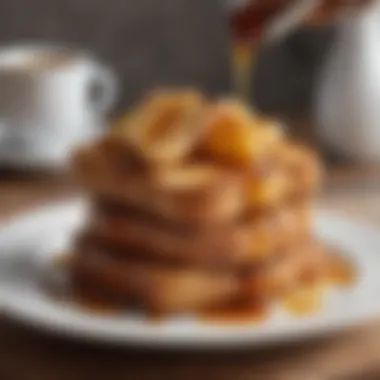
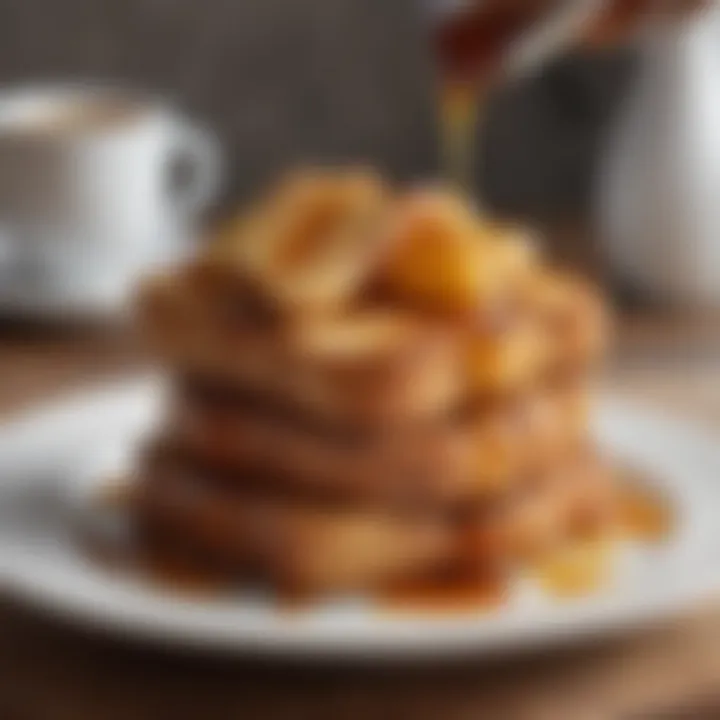
Local Ingredients: A Source of Inspiration
The use of local ingredients plays a starring role in culinary adaptations. Each region offers a unique palette that inspires creativity in French toast recipes. For example, in California, farmers may introduce fresh fruit like avocados and berries, breathing new life into this breakfast staple. On the other hand, in Scandinavia, one might find rye or spiced bread as a base, reflecting local tastes.
The key benefit of local ingredients is their freshness and authenticity. Using what’s at hand connects cooks to their surroundings and can often make for a more sustainable cooking practice. However, the unique feature here is the potential limitation it may impose. Not every cook will have access to the same ingredients, making it important for recipes to remain flexible. A creative cook learns to adapt substitutes that honor the spirit of the dish, ensuring that even those far from the source can enjoy a piece of the tradition.
Adaptations for Dietary Preferences
As dietary needs evolve, so does the art of French toast. It's crucial to explore adaptations that cater to various preferences without sacrificing taste or texture. This inclusivity makes French toast not just a breakfast item but a canvas for everyone, allowing each person to step into the kitchen with confidence.
Gluten-Free Options
The rise in gluten sensitivity has pushed the culinary world to respond with innovative gluten-free options. By using alternative flours such as almond or coconut flour, one can achieve that crispy exterior paired with a creamy custard that everyone craves. This adaptation contributes to the overall goal of the article by ensuring that French toast remains accessible to those with dietary restrictions.
A key characteristic of gluten-free options is their variety. Many people are discovering delicious gluten-free bread options that can stand up to traditional counterparts, providing not just a substitute but an exciting alternative. A unique feature is the different textures they may provide, leading to a slightly different experience with every bite. However, one must keep in mind that gluten-free ingredients can sometimes yield a denser product, requiring adjustments to soaking times or cooking methods to achieve the desired result.
Dairy-Free Substitutions
Dairy-free substitutions also play a vital role in adapting French toast to meet various dietary needs. Many people now explore options such as almond milk, oat milk, or even coconut milk. Each of these brings its own flavor profile and consistency to the dish. This availability makes it easier than ever for dairy-sensitive individuals to join in on this breakfast staple without feeling left out.
The key characteristic of dairy-free substitutions is versatility; they allow for a range of flavors while staying true to the dish's integrity. For instance, coconut milk infuses a wonderful subtle tropical note. Unique advantages include a lighter feel on the palate and often lower calories than traditional dairy. Nevertheless, individuals must be cautious as some substitutions can affect the overall richness of the custard, necessitating careful adjustment to measurements to maintain that luxurious, creamy texture.
Understanding these culinary variations and adaptations enriches our appreciation for plain French toast, making it a dish that resonates with many lifestyles and cultures globally.
The Role of French Toast in Breakfast Culture
French toast holds a distinctive place in the heart of breakfast culture across many regions. Traditionally, it offers a blend of versatility and simplicity, making it an enduring choice on breakfast tables. This dish, with its roots in frugality, is a testament to the ability of cuisines to transform humble ingredients into something more extraordinary. Its importance transcends mere sustenance, embodying heritage and a sense of ritual that many communal meals possess.
"Food is not just about feeding the body; food creates memories and builds connections."
Understanding Breakfast Traditions
Breakfast serves as the first meal of the day, often seen as the cornerstone of daily routines. French toast, given its flavor and ease of preparation, often finds its way into this ritual. In various cultures, breakfast offers a glimpse into local customs and ingredients available in each area. For instance, in America, the dish gets a sweet twist, usually topped with syrup or fresh fruits. In contrast, many European countries might elevate it to another level, treating it as a dessert or a rich brunch item, served with dollops of whipped cream and berries.
The communal aspect of breakfast cannot be overlooked. Whether it's family gatherings or brunches with friends, French toast often represents a moment of connection. The simple act of sharing a warm meal nurtures relationships, bringing people together over something universally loved. When discussing breakfast traditions, one can’t forget about special occasions, such as holidays or birthdays, where French toast may get a festive spin, perhaps infused with seasonal flavors like pumpkin during fall.
Cultural Adaptations and Seasonal Variations
As culinary traditions spread, they often adapt to local tastes and seasonal ingredients. In some parts of the world, you may find spicy versions of French toast, where distinct spices from local cuisines are blended into the batter. In India, for example, bread may be dipped into a mixture of eggs, milk, and a hint of turmeric, resulting in a vibrant-yellow dish that carries a unique taste. In South America, flavors like coconut or the use of panela (a type of sugar) can transform the standard French toast into something that sings of tropical freshness.
Seasonal variations also play a crucial role in keeping this breakfast favorite relevant. During the spring, fresh fruits such as strawberries or rhubarb can be synonymous with French toast. The summery flavors bring lightness, while autumn embraces heartiness, often favoring cinnamon and spiced apple toppings. Even winters might inspire heartier servings, nourishing those who need a warming meal on chilly mornings.
End and Final Thoughts
Crafting the perfect plain French toast is an art that melds simplicity with a profound respect for quality ingredients and cooking techniques. This article has navigated through a range of essential considerations, from the historical significance of French toast to the careful selection of bread, eggs, and seasonings. By understanding these nuances, both novice and experienced cooks can elevate a seemingly humble breakfast into a memorable culinary experience.
In the journey of mastering this dish, one learns that it’s not merely about following a recipe; it’s about embracing the opportunity to imprint one’s own personality onto the plate. The benefits of engaging with French toast extend beyond satisfying hunger. It invites creativity in the kitchen, encourages experimentation with flavors, and fosters a deeper appreciation for culinary culture.
Taking into account various techniques discussed, such as soaking times and cooking methods, is crucial for achieving that perfect golden-brown exterior while ensuring the inside remains deliciously custardy. These aspects can no longer be seen as mere details; they are essential for perfecting the dish.
Ultimately, the role of French toast in breakfast culture serves as a reminder of the comfort food ethos. It’s a dish that’s easily shared among friends and family and can adapt to suit any palate, which we have seen through its various adaptations and global interpretations.
"Cooking is like love; it should be entered into with abandon or not at all."
The flexibility of this dish also welcomes a multitude of dietary preferences, from gluten-free choices to dairy alternatives, making it a delightful addition to any breakfast table.
Recap of Key Points
- Historical Context: French toast has a rich history, rooted in cultures around the world, highlighting its significance in culinary traditions.
- Essential Ingredients: Utilizing quality bread such as brioche or sourdough, selecting the right eggs, and choosing the appropriate milk can make a significant difference in flavor and texture.
- Preparation Techniques: Key steps include creating a balanced custard mixture, soaking the bread adequately, and mastering cooking methods that yield optimal results.
- Presentation and Serving: Enhancing the dining experience through plating and pairing with unique toppings can transform a simple dish into an artistic endeavor.
- Culinary Variations: Exploring global adaptations and accommodating various dietary needs further enrich the French toast experience.
Encouragement to Experiment with Flavor and Technique
The world of French toast is ripe for creativity. Whether it’s incorporating spices like cardamom or trying out fresh fruits as toppings, the possibilities are endless. Don’t hesitate to stray from traditional methods. For example, why not infuse your custard mixture with an unexpected flavor, like almond extract, or toss in a handful of chocolate chips?
Experimentation doesn't have to stop at sweet flavors, either. Consider savory avenues by adding herbs or cheese and transforming your morning routine completely. By doing so, each breakfast becomes an opportunity to innovate and delight your taste buds.
Encouraging personal flair in the kitchen is vital. Remember, the key to becoming comfortable with cooking is making it your own. So roll up your sleeves, put on that apron, and don’t be afraid to create a French toast masterpiece that reflects your unique tastes and personality.







